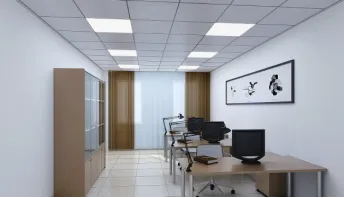11 月 . 01, 2024 03:50 Back to list
Installation Guide for Drop Ceiling Tile Grids and Related Tips
Understanding Drop Ceiling Tile Grids An Essential Guide
Drop ceiling tile grids are a popular feature in modern commercial and residential construction. A drop ceiling, also known as a suspended ceiling, consists of a grid framework that supports lightweight ceiling tiles. This system not only enhances the aesthetic appeal of a space but also offers practical solutions for various architectural needs. Here, we will delve into the components, installation processes, and benefits of drop ceiling tile grids.
Components of Drop Ceiling Tile Grids
A drop ceiling grid typically consists of main runners, cross tees, and wall angles. The main runners are long, horizontal metal strips that run the length of the room. They provide the primary support for the ceiling tiles. Cross tees are shorter pieces that connect to the main runners, forming a grid-like pattern. Wall angles, mounted at the perimeter of the ceiling, provide a clean, finished edge and support for the grid framework.
Ceiling tiles can be made from various materials, including mineral fiber, gypsum, vinyl, and metal. Each type of tile offers different acoustical properties, aesthetics, and durability, making it important to select the right option for each specific application.
Installation Process
Installing a drop ceiling tile grid is a straightforward process, making it an appealing option for both DIY enthusiasts and professional contractors. The first step is to measure the room dimensions accurately to determine the amount of materials needed. After marking the desired height of the ceiling, the wall angles are installed around the perimeter, ensuring they are level.
drop ceiling tile grid

Next, the main runners are positioned according to the predetermined grid layout. The cross tees are then inserted to create the grid framework. Finally, the ceiling tiles are cut to fit as necessary and inserted into the grid. This adaptable system allows for easy access to plumbing, electrical, and HVAC systems above the ceiling, making maintenance convenient.
Benefits of Drop Ceiling Tile Grids
One of the primary benefits of drop ceiling tile grids is their ability to improve acoustics within a space. The right ceiling tiles can significantly reduce noise levels, making them perfect for offices, schools, and other environments where sound control is essential. In addition, drop ceilings can hide unsightly wires, ducts, and pipes, resulting in a cleaner, more polished appearance.
Energy efficiency is another advantage offered by drop ceilings. Some ceiling tiles come with insulating properties that help reduce energy costs by maintaining temperature levels within a building. Moreover, many tiles are designed to reflect light, enhancing the overall brightness of a room while reducing the need for excessive artificial lighting.
Finally, the flexibility of drop ceiling tile grids is unmatched. They can be easily modified or expanded to accommodate changing space needs, making them an ideal choice for businesses that anticipate growth or renovations.
Conclusion
In summary, drop ceiling tile grids are a versatile and practical solution for enhancing the functionality and aesthetics of any space. Whether you are a homeowner looking to update your living room or a business owner aiming to create a more professional environment, understanding the components and benefits of drop ceilings will guide you in making informed decisions for your construction or renovation projects. With their appealing look and numerous advantages, drop ceiling tile grids remain a staple in modern architecture.
-
Revolutionizing Interior Design with Ceilings t grid Suspended SystemNewsOct.29,2024
-
Revolutionizing Ceiling Design with ceiling access panel with Gypsum Tile WaterproofNewsOct.29,2024
-
Revolutionizing Interior Design with PVC Gypsum Ceiling: A Comprehensive GuideNewsOct.29,2024
-
Elevating Interior Design with High quality Mineral Fiber Ceiling TilesNewsOct.29,2024
-
Revolutionizing Interior Design with PVC Gypsum Ceiling: A Comprehensive GuideNewsOct.29,2024
-
Elevating Interior Design with High-Quality Mineral Fiber Ceiling Tiles: A Comprehensive GuideNewsOct.29,2024







